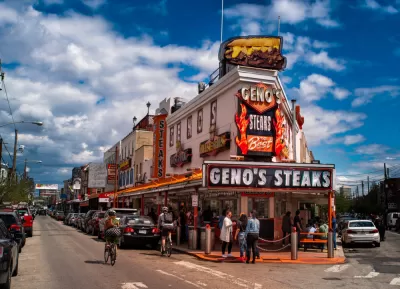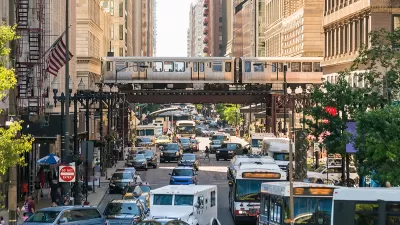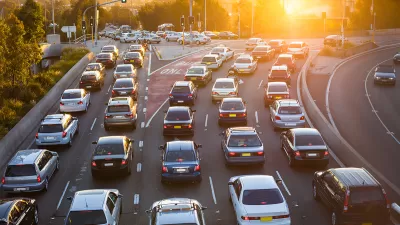A new study considers urban form, roadway characteristics, traffic collisions, and fatalities in the Philadelphia region, to show that the densest parts of regions are the safest places to drive and walk.

"New research from the University of Pennsylvania [pdf] shows that denser cities and towns can save lives," reports Ryan Briggs.
"The four-year long study compared Pennsylvania Department of Transportation records of all car accidents in a five-county region with population data, socioeconomic factors, different road types, and other factors," explains Briggs. "The resulting analysis, which examined collision data from 2010 and 2014, showed that the densest parts of the region –– like downtown Philly or suburban town centers –– had lower accident rates than more sprawling areas."
One key distinction in the data emerges when comparing pedestrian and vehicle safety. "While denser sections of the suburbs had lower accident rates overall, drivers fared better than pedestrians. Densely populated areas in the suburbs and some outlying Philadelphia neighborhoods actually experienced higher rates of vehicle/pedestrian collisions than sparsely populated areas," according to Briggs.
As noted by Briggs, the study has implications for transportation planning in every corner of the Philadelphia region, where communities have been built across a broad spectrum of development and planning history. Erick Guerra, co-author of the study and an assistant professor of urban planning at Penn, is quoted in the article saying that the study should inform where and how the region grows in the future.
FULL STORY: City streets safer than suburban roads, study finds

Maui's Vacation Rental Debate Turns Ugly
Verbal attacks, misinformation campaigns and fistfights plague a high-stakes debate to convert thousands of vacation rentals into long-term housing.

Planetizen Federal Action Tracker
A weekly monitor of how Trump’s orders and actions are impacting planners and planning in America.

Chicago’s Ghost Rails
Just beneath the surface of the modern city lie the remnants of its expansive early 20th-century streetcar system.

Bend, Oregon Zoning Reforms Prioritize Small-Scale Housing
The city altered its zoning code to allow multi-family housing and eliminated parking mandates citywide.

Amtrak Cutting Jobs, Funding to High-Speed Rail
The agency plans to cut 10 percent of its workforce and has confirmed it will not fund new high-speed rail projects.

LA Denies Basic Services to Unhoused Residents
The city has repeatedly failed to respond to requests for trash pickup at encampment sites, and eliminated a program that provided mobile showers and toilets.
Urban Design for Planners 1: Software Tools
This six-course series explores essential urban design concepts using open source software and equips planners with the tools they need to participate fully in the urban design process.
Planning for Universal Design
Learn the tools for implementing Universal Design in planning regulations.
planning NEXT
Appalachian Highlands Housing Partners
Mpact (founded as Rail~Volution)
City of Camden Redevelopment Agency
City of Astoria
City of Portland
City of Laramie





























